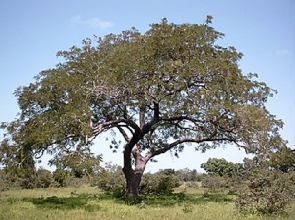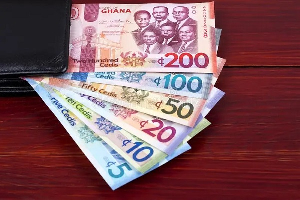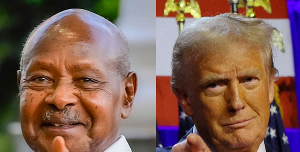As foragers, the pre-occupation of these indigenes (the Tendaanba) was animal domestication. Initially, their livelihood depended on hunting and exploiting wild food resources like roots, herbs, and fruits.
Among such wild fruits were the Taangaa (i e. shea) fruits (Butyrospermumparkii), the Duor (i e. Dawadawa) fruits, the Chihaa fruits otherwise commonly called ackee-apple, the Haaraa fruits, commonly known botanically as ebony.
(Excerpt from a book titled “The Kingdom of Wa”, page 14, written by Mohammed Bin Salih).
Tendaanba (singular; Tendaana) are spiritual by nature, they are the custodians of the Land, Water and other things/minerals found in those lands or waters. Due to the economic and other benefits of the fruits mentioned earlier, the Tendaanba have exacted their authority and ownership over those trees. By Protecting these specific special trees, it brings to clarity who (Tendaana) exactly owned those lands.
People (non-Tendaanba/ other tendaanba) who farm or settle on these lands are mandated to periodically update the land owners, the state of the economic trees. This arrangement provides clear proof of ownership of the Lands by the different groups of Tendaanba in Wa, especially in times of Land and chieftaincy disputes.
Growing up in Boli, a suburb of Wa in the upper west region, the Tendaanba (Ikɔ and Balun) used to restrain/ban people from entering the bush to pick shea nuts, cut down trees for fire woods/charcoal, etc for a certain period. This practice was called moɔ pagibo (bush closing or locking). This practice happened in almost all communities under the Waala kingdom. The essence was to allow everybody prepare adequately for the picking of shea nuts together.
Another reason was to monitor the indiscriminate cutting of Taangaa daari (shea trees) or any of the special trees and putting in measures to curtail it. All those (mostly women) who violated this law put themselves in harm’s way with the gods (they may be prone to spiritual snake attacks, etc). Those who were caught in the act were summoned by the chief and punished accordingly. It is still practiced today though not effective. Now let’s look at the special trees that are held in high value by the Tendaanba.
Taa-ngaa Dau (Shea Tree)
The shea tree is the most economic tree in the northern belt of Ghana and it is the single most protected tree species by the Tendaanba of Wa. The shea tree produces shea fruits/nuts. The shea fruits have an irresistibly sweet taste with some nutritional benefits too. After eating the fruit, comes the nuts. The shea nuts are further processed into the popular shea butter.
Shea butter is used for cooking, making soap, pomade. Shea butter has medicinal value too. The oil heals wounds faster. The shea trees also provide the best firewood or charcoal (though not permissible to cut a living shea tree).
When the Tendaana (Land custodians) give a portion of land to a nontendaana to either build or farm, the new owner is prevented from arbitrarily ( unless very necessary) cutting down shea trees for any reason. The wives (wives) of the Tendaanba are permitted to pick shea nuts from that land without any hindrance.
After the nuts-picking season is over, the new owner is to account to the Tendaana, the proceeds from the land. People may overlook some of these practices because of the system of land ownership today. In the past, lands were offered to people by Tendaanba, not sold to them, and that made the Tendaanba to still have some level of authority over them.
Duɔ (Parkia biglobosa/Locust beans/ dawadawa)
The Dawadawa tree is one of the second economic trees in northern parts of Ghana, especially Wa. The fruits(pods) of dawadawa contain both a sweet pulp and valuable seeds. The powder, as well as the seeds, has health and economic benefits to humans.
For instance, the powder is food for the family. By adding just water to the powder or adding it to boiled beans or Bambara beans, you get a delicious meal for the family. The seeds when processed produce a traditional seasoning spice called kpali (dawadawa). The nutritional benefits of Kpali, as well as the “dujong” (powder from the Dawadawa pod), cannot be overemphasized. Kpali is the most consumed spice in our local setting as most households preferred kpala to magi or other exotic seasoning spices. As a standing tree, the dawadawa tree may have a positive effect on the yield of other nearby crops. Farmers can testify.
Knowing the medicinal and nutritional benefits derived from the dawadawa tree, the Tendaanba have taken steps to protect and prevent the extinction of this rare tree. For instance, the sole owner(s) of the dawadawa tree is the Tendaana. If you were given a portion of land to farm or settle, you were not allowed to cut down the dawadawa tree(s) found on that land.
Also, when the dawadawa tree bore fruits, the settler or farmer was expected to send the proceeds to the Tendaanba to take their share first. That was also for the Tendaanba to take stock of the number of dawadawa trees under their jurisdiction. Violating these rules amounted to forfeiting of the land.
Chihaa (Ackee-apple)
The rarest tree in the Waala Kingdom that is so dear to the Tendaana is the Chihaa. Most tasty Chihaa trees are found in our homes or close to our settlements. Chihaa fruits have a sweet unique milky taste that is simply irresistible to its patrons. It’s a meal on its own. The chihaa leaves, bark, and roots are medicine to humans. For example, the leaves are used to heal broken bones quickly. The leaves could also be used to cover Dawadawa spice to give it the desired taste and nutrition it deserves.
In those days at Boli, there was this chihaa called oɔra baluu literally to mean chewing (something) on bloodlines. If you were not related to the owners or not a tendaana(elderly), you were not given oɔra baluu to chew. Once the roots of a chihaa are exposed, it won’t give the desired taste people want. So periodically, the roots (exposed ones) are covered with soil to maintain the sweet taste of the fruits.
If you are given land to farm or settle and you intend to plant a Chihaa tree, you must first inform the Land custodians. When the chihaa is yielding fruits, you are expected to pay homage to the chihaa fruits to the Land Owners. Also, a Tendaana is not prevented from plucking Chihaa fruits from any Chihaa tree under his jurisdiction.
Other trees include the “Gbelaa” tree, nim tree, and Mango. Nim tree (Nansaari sunsugree or datɔɔ) is a foreign tree that was brought by Europeans or other migrants. It primarily serves as a shade with the leaves, barks and roots also serving as medicine. Mango (mongo) is another foreign tree that produces delicious fruits. It leaves serve as medicine. The Gbelaa tree is local and mainly for providing shade. The leaves of gbelaa are good food for livestock.
Before one (non-tendaana) plants any tree, the tendaanba must be informed. Their approval or otherwise is important. Most of these practices are fading due to the contemporary land ownership system.
A land is supposed to be given out willingly free to relatives, friends among other people for development purposes. Selling of lands is alien to our customs and traditions. This modern practice of land selling is shrinking the powers of the Tendaanba and weakening the Tendaalung in Wa.
Opinions of Monday, 22 May 2023
Columnist: Toppie Ac















